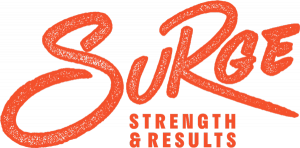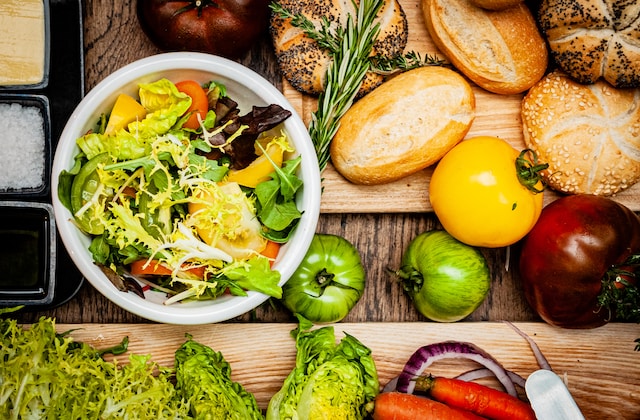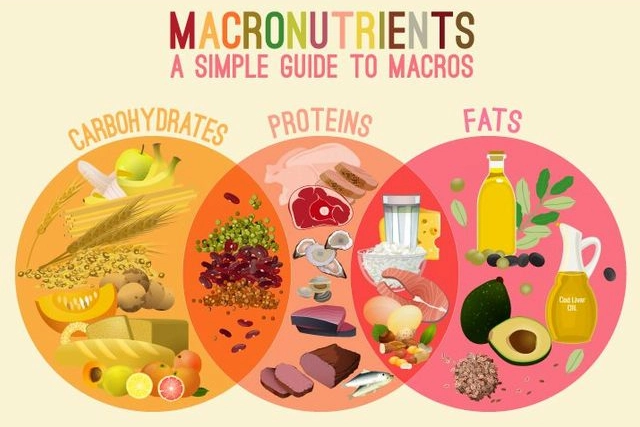— Do you eat meat?
— No, I’m vegetarian.
— Do you eat fish?
— No, I don’t.
— How about chicken?
— Nope.
— Then what DO you eat?.. (the question asked with a mix of amusement and real concern)
Perhaps, every vegetarian or vegan had a similar conversation at least once in their lifetime. It’s protein omnivores are usually concerned about. And you can’t blame them. There’s a long-lived belief that vegetarian proteins are of inferior quality. Is that so and is there anything we can do about it? Let’s see.
Protein is the macronutrient in your body that builds and repairs muscle tissue. It’s essential for digestion, metabolic function, and creating infection-fighting antibodies. Your brain, heart, liver, and muscles consist of protein. In summary, a healthy body and mind really need it.
Some examples of plant protein sources are lentils, chickpeas, most varieties of beans, green peas, sprouted grains, spirulina, nuts, and nut butter. Even some vegetables such as broccoli, spinach, and asparagus have protein in them.
Now, the truth is that most of those proteins are incomplete, meaning that they don’t have all nine essential amino acids which serve as building blocks of protein. The fact that our body can’t produce them on its own makes it essential for humans to get them from food.
Complete Vegetarian Proteins for Vegetarians and Vegans
Animal proteins are the richest food source for complete proteins, but there are also options for vegetarians and vegans. To add complete proteins to your diet look for quinoa, buckwheat, amaranth, soy products (tofu, tempeh, soya milk), spirulina (a type of blue-green algae), hemp, and chia seeds.
Moreover, you’ll be probably pleased to know that simple combinations like rice & beans, pita & hummus, and peanut butter sandwich with whole grain bread have all essential amino acids in them.
And the best part is that research (Protein and vegetarian diets by Kate A Marsh, Elizabeth A Munn, Surinder K Baines Aug 2013) suggests there is no need to consciously combine different plant proteins at each meal as long as a variety of foods are eaten from day to day. The reason is that the human body maintains a pool of amino acids which can be used to complement dietary protein. The consumption of plant proteins rather than animal proteins by vegetarians may contribute to their reduced risk of chronic diseases such as diabetes and heart disease.
The real problem however, especially when it comes to weight loss, is that all the vegetarian proteins have some amount of carbs in them. From our experience, Surge trainers will tell you confidently that going low-carb and prioritizing protein in your diet, is one of the proven and highly efficient methods to lose weight. Well, is it even possible to achieve being a vegetarian? Yes, all you need is an understanding of the proportions of macronutrients in your food and careful planning.
Examples of High-Protein, Low-Carb Vegetarian Options
Let me give you a few examples. High-protein and relatively low-carb options are red lentils, mung beans, chickpeas, tofu, green peas, and kidney beans. For instance, 100 g of firm tofu will provide you with 12-15 g of complete protein, 6-10 g of fat, and only 1-2 g of carbs.
Tempeh, made of soybeans, on the other hand, has about the same amount of protein per 100g as firm tofu, but it’s lower in fat (4-5 g per 100 g) and higher in carbohydrates (9-10 g per 100 g).
Paneer (cottage cheese) while providing about the same amount of protein per 100 g as tofu and tempeh, has relatively low carb content (5 g per 100 g) but is high in fats (22 g per 100 g), and note that we are talking about fat of an animal origin here.
100 g of cooked quinoa gives us 21 g of carbohydrates, 4,4 g of protein, and 1,9 g of fat.
100 g of cooked lentils contain 20 g of carbs, 9 g of protein (twice as much as quinoa but doesn’t have all the essential amino acids), and only 0,38 g of fats.
This list can go on and on but you get the idea. It’s relatively easy to find this information online or on a product label while shopping, now that you know what to look for.
Variety in Vegetarian High-Protein Meals
If you want to add variety to your vegetarian diet while targeting high protein intake and staying relatively low on carbs, look for beans- or lentils-based pasta. Check this out: 100 g of edamame beans spaghetti will provide you with 15 g of protein, 4 g of carbs, and only 1 g of fat. Black bean spaghetti will gladly triple the amount of protein found in edamame-bean pasts (42 g per 100 g). Unfortunately, this comes with its trade-off: 37 g of carbohydrates per 100 g and 6 g of fat.
You can cook this spaghetti just as you would a regular wheat pasta or noodles. Throw in some tofu and cheese and enjoy your meal full of the amino acids your body needs.
This article will be incomplete if we leave out modern-day alternative protein sources for vegans and vegetarians. Today you can find a great variety of mock meat and something called micropriotein.
Plant-based meat is a meat substitute intended to replicate the taste and appearance of real meat. Often, plant-based meat is made from several types of plant-based protein such as soy, pea, hemp, or wheat protein with the addition of other ingredients, such as beetroot, for example, to imitate red meat color.
While plant-based meat has some benefits, for example, being environment-friendly and providing a substantial amount of fiber, it does come with a few drawbacks. It is highly processed in some cases. And eating a diet with the majority of processed foods has been linked to negative health outcomes, including weight gain and an increased risk for metabolic syndrome. Also, not all plant-based meat alternatives are gluten- and cholesterol-free. So all things considered, I would not recommend relying on these products heavily. Always read the label with ingredients and nutrition facts before buying any of the products.
The Benefits of Mycoprotein
Mycoprotein, on the other hand, is a totally different story. It is an alternative, nutritious protein source made from Fusarium venenatum, a naturally occurring fungus (Mycoprotein: The Future of Nutritious Nonmeat Protein, a Symposium Review by Tim J A Finnigan, Benjamin T Wall, Peter J Wilde, Francis B Stephens, Steve L Taylor, and Marjorie R Freedman). So it’s not a combination of plant proteins like in plant-based meat. Mycoprotein, sold as Quorn, is consumed in 17 countries, including Singapore. It is high in protein and fiber, and low in fat, cholesterol, sodium, and sugar. Mycoprotein may help maintain healthy blood cholesterol levels, promote muscle synthesis, control glucose, and insulin levels, and increase satiety. It took British scientists 20 years of research and development to produce the mycoprotein. In 1983, after a 10-y evaluation, the UK Ministry of Agriculture, Fisheries and Food approved mycoprotein for food use. Two years later, a savory pie became the first mycoprotein-containing retail product sold in the UK under the brand name Quorn. Currently, Quorn is sold in 17 countries as an ingredient in frozen or refrigerated food products with an estimated 5 billion servings consumed worldwide since launch. Some of the products have received approval from the Vegan Society.
This trend is set to continue. In addition, recent investigations into technologies such as high-pressure homogenization now offer the possibility that mycoprotein can be used to create new vegan formats, flavors, and uses, notably applications in the growing nondairy milk and desserts category.
My personal experience, years of being on a vegetarian diet, including years of resistance training, and learning about muscle-building and weight loss, taught me that whatever nutrition approach you choose, it’s essential to understand your food and learn what works for you personally. I hope this article helps you to recognize vegetarian proteins better. And should you have questions, we will be happy to hear from you.


Article Written By:
Maria Bondarenko



